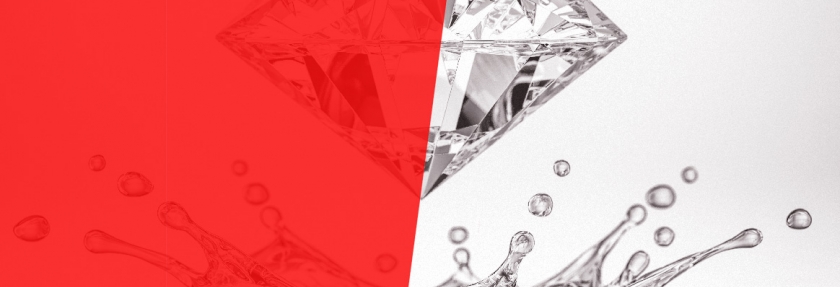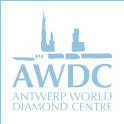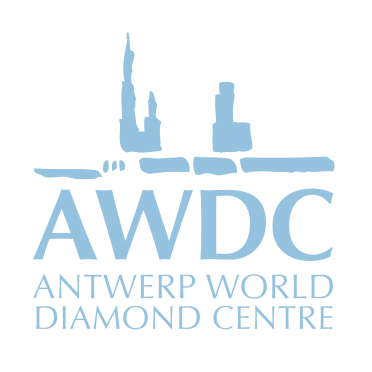Add new comment
FiltersDIAMOND JEWELRY RETAIL GROWTH OF 3 PERCENT ADDS LITTLE SPARKLE

According to Bain & Company’s sixth annual report on the global diamond jewelry market, Millennials could give a further boost to industry sales, if the industry finds a way to reach them effectively.
The global diamond industry performed moderately well in 2015, led by diamond jewelry retail sales, which grew 3 percent at constant exchange rates. However, currency depreciation last year, as well as slower demand in China, contributed to a decline in global revenue of about 2 percent in U.S. dollar terms. Similarly, in the midstream, U.S. dollar revenues dipped by 2 percent and rough diamond sales fell nearly a quarter (24 percent). That decline was the result of reduced purchasing volumes in the cutting and polishing sector and the release of about $5 billion of their inventories into the downstream markets. These are the findings in the sixth annual report on the global diamond jewelry market, prepared by the Antwerp World Diamond Centre (AWDC) and Bain & Company.
The diamond jewelry market demonstrated relative stability last year. The U.S. remained the global sales growth engine, as mainstream jewelry retailers benefitted from strong demand among middle-class buyers. Elsewhere around the world, Greater China continues to rebalance as slowing tourist flows to Hong Kong and Macau offset otherwise positive dynamics in Mainland China. This shift in tourist spend benefitted Europe and Japan, as reflected in positive consumption growth in local currencies. In India, strong macro-demographics, particularly the growing middle-class, supported positive gains. Yet, even these positive trends were no match for the strong U.S. dollar, which drove global markets into negative growth rates.
Additional findings from the report reveal revenues in the cutting and polishing subsector declined by about 2 percent in 2015 due to the slowdown in global diamond jewelry demand, which increased retailers’ inventories. This scenario forced the midstream segment to reduce rough-diamond purchase volumes and unload inventory surpluses accumulated in 2013 and 2014. Combined with the demand slowdown, the move contributed to a decline in polished-stone prices of about 10 percent in 2015.
Rough-diamond producers reacted to their customers’ challenges: reducing output, increasing their own inventory levels and providing more flexible purchasing terms while cutting rough-diamond prices.
“In 2015, the diamond jewelry and midstream segments showed relative stability, but the same cannot be said for rough-diamond producers, which experienced a double-digit revenue decline,” said Olya Linde, a Bain partner and lead author of the report. “Although demand for rough diamonds has rebounded so far in 2016, the holiday season will determine the retail and midstream segments’ full-year performance.”
Even though the industry may be poised for a modest rally, several key headwinds persist – secure access to financing within the midstream sector; slowing consumption in China; and the ongoing threat of synthetics and counterfeit diamonds. However, the sheer number and growing spending power of Millennials, as well as strong overall macro fundamentals present a glimmer of hope over the mid- to long-term.
Bain and AWDC conducted a survey of more than 1,500 Millennials in China, India and the U.S. and found that they are similar to previous generations in terms of size, current and future spending levels and positive attitudes towards diamond jewelry. The population of Millennials in these countries totaled roughly 900 million in 2015, and their combined gross income amounted to approximately $8 trillion. Taken together, they are the fourth largest economy, behind the U.S., European Union and China, and are likely to double to some $16 trillion, or 38 percent of total gross income, by 2030. Like earlier generations, they rank jewelry high among their gifting preferences—it is first in China and India and third in the U.S., behind money and electronics.
However, differences in shopping behavior suggest that revised marketing and customer acquisition strategies are needed to reach this group of customers effectively. In the U.S., Millennials actively use the internet for jewelry purchases; in India they tend to prefer department stores. Chinese Millennials, like other age groups in China, prefer specialized retailers for jewelry shopping and tend to make their purchase decisions in stores. To fully capture Millennials’ demand over the longer term, industry players need to invest in marketing and brand-building efforts and redefine the customer’s retail experience.
“As this new generation of consumers heads toward its prime spending years, the diamond industry needs to find ways to effectively engage with them now,” said Linde. “Smart producers and retailers are actively looking for ways to appeal to them. Those that don’t will encounter yet another hurdle to overcome in an already-turbulent market.”
Looking ahead, the outlook for the diamond industry in the medium-term remains challenging, as new supply is expected to come on line and uncertainties cloud the social, political and economic environments in key markets. Over time, however, the positive macroeconomic outlook is expected to work in the industry’s favor—as long as diamond producers behave responsibly and industry players sustain their marketing efforts to support diamond jewelry demand, especially among Millennials.
Longer-term, the diamond market will trend in a positive direction. Using its proprietary forecasting method, Bain projects rough-diamond supply and demand to be tightly balanced through 2019-2020. Demand for rough diamonds are expected to recover from the recent downturn and return to a long-term growth trajectory of about 2-5 percent per year on average, relying on strong fundamentals in the U.S. and the continued growth of the middle class in India and China. The supply of rough diamonds is expected to decline annually by 1 to 2 percent in value terms through 2030.
“AWDC is pleased to present the results of our collaboration with Bain in this, our sixth annual report on the global diamond jewelry market. AWDC initiates these reports, which are distributed freely, out of the firm conviction that an informed diamond industry will make more intelligent decisions to the benefit of all. It is in this spirit that we have launched our ‘Diamonds and Antwerp: It’s in our DNA’ campaign; namely, to generate a global commitment to the principles underpinning a sustainable, ethical and thereby profitable diamond industry – again in the interest of all,” said Ari Epstein, CEO of the Antwerp World Diamond Centre. “It is important that we realize, as does the DPA, for instance, through the ‘Real is Rare’ campaign, that we will only prosper when we achieve principled solidarity throughout the diamond pipeline, upon which we engage in fair competition. I therefore invite everyone to enjoy the fruits of our efforts.
Editor's Note: For a copy of the report or to schedule an interview with Olya Linde:
International media: Dan Pinkney at dan.pinkney@bain.com or +1 646 562 8102
Russian media: Masha Shiroyan at masha.shiroyan@bain.com or +7 495 721 8686
To schedule an interview with Ari Epstein, AWDC, please contact Margaux Donckier at margauxdonckier@awdc.eu





